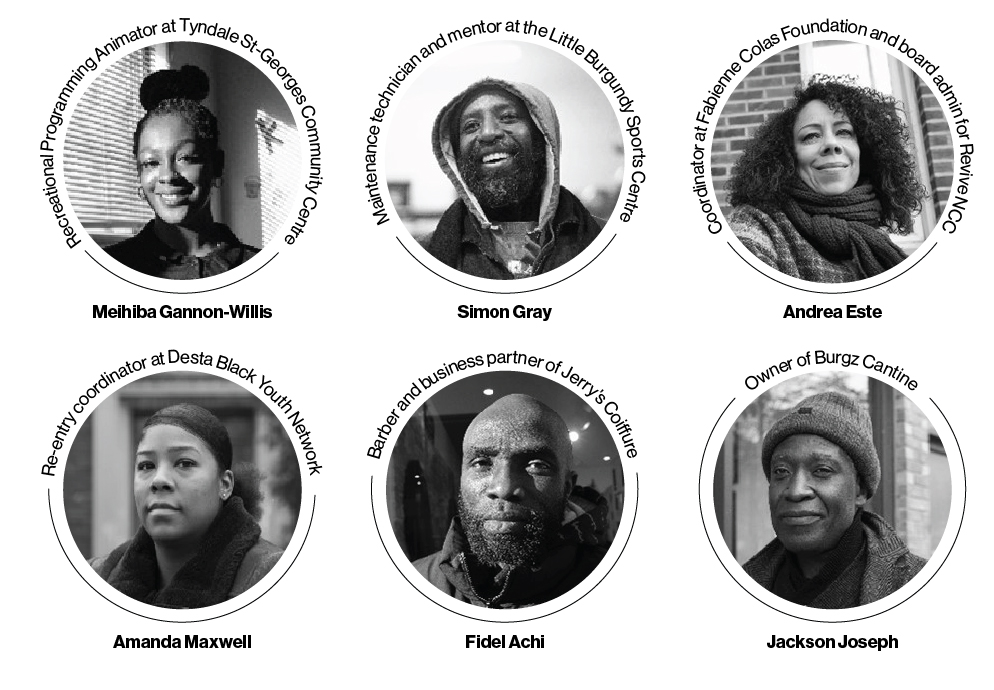People Working in Burgundy
Delve into the historical and present-day opportunities for black individuals in Montreal’s vibrant Little Burgundy Community. Discover the enduring legacy of this dynamic community and its enduring impact on Montreal's cultural landscape.
![]()
Before the advent of railways, the employment opportunities available to black people in Montreal were severely limited. They faced racism, received low wages, endured poor working conditions, and were often treated with disrespect. These factors constrained black men and women to a narrow range of employment options at the time.
In the 1870s, the Pullman Palace Car Company introduced railway sleeping cars to Canada. These Pullman passenger rails were renowned for their luxurious accommodations, comfort, and the exceptional service provided by the porters. Consequently, railways emerged as one of the few Canadian companies that hired Black men during the early 20th century.
![]()

Before the advent of railways, the employment opportunities available to black people in Montreal were severely limited. They faced racism, received low wages, endured poor working conditions, and were often treated with disrespect. These factors constrained black men and women to a narrow range of employment options at the time.
In the 1870s, the Pullman Palace Car Company introduced railway sleeping cars to Canada. These Pullman passenger rails were renowned for their luxurious accommodations, comfort, and the exceptional service provided by the porters. Consequently, railways emerged as one of the few Canadian companies that hired Black men during the early 20th century.

Throughout the era of railway prominence, black men were predominantly expected to assume the role of porters. Notable figures such as the long-serving executive director of the NCC, Reverend Stanley Clyke, the father of jazz legend Oscar Peterson, and Reverend Charles Este all served as railway porters at one point. This tradition often extended across generations, with sons following in the footsteps of their fathers, creating a bond among black men working in this industry.
Job Description of Sleeping Car Porters
These positions entailed long hours attending to passengers' needs and expectations, being on call 24 hours a day, working up to 18 hours a day for 20 days a month. Despite the arduous working conditions, lengthy hours, low pay, and lack of job security, these roles were often regarded as prestigious, given that many of the black men employed in these positions were highly educated and well-traveled.
Unions
Black Canadian porters established the first Black railway union in North America in 1917 and later became members of the larger Brotherhood of Sleeping Car Porters in 1939. These unions actively fought against racism and the various challenges that porters encountered on the job.
Transition from Trains to Cars
The transition from trains to cars resulted in widespread unemployment within the black community and a significant spatial reorganization of the city. The construction of new highways led to the demolition of much of the neighborhood, compelling many families from the black community to relocate. During this time, labor market inequities persisted, with unemployment among the Black community in Montreal being 2.5 times higher than among non-Blacks.
Traces of the Black Community in Little Burgundy
Black Canadian porters established the first Black railway union in North America in 1917 and later became members of the larger Brotherhood of Sleeping Car Porters in 1939. These unions actively fought against racism and the various challenges that porters encountered on the job.
Transition from Trains to Cars
The transition from trains to cars resulted in widespread unemployment within the black community and a significant spatial reorganization of the city. The construction of new highways led to the demolition of much of the neighborhood, compelling many families from the black community to relocate. During this time, labor market inequities persisted, with unemployment among the Black community in Montreal being 2.5 times higher than among non-Blacks.
Traces of the Black Community in Little Burgundy
Despite these challenges, the enduring presence of the black community has left a lasting mark on Little Burgundy, as evidenced by the presence of community-based organizations and programs. Despite the dispersion of the Anglo-black community and the demolition of the renowned NCC, personal narratives from former residents highlight the resilient bond between Little Burgundy and the black community.
"When my people arrived,
they automatically felt at home."
- Jackson Joseph,
life-long resident of Little Burgundy
and owner of Burgz Cantine

What can you find around Little Burgundy today?

Community
Restaurants
Businesses + Services
Negro Community Center
Desta Black Youth Network
Youth in Motion
Tyndale St-Georges Center
Little Burgundy Sports Center
Low Income Housing Program
Salvation Army: The Booth Centre
St. Anthony of Padua Catholic Church
Special Education School
Cultural Centre and Public Library
Desta Black Youth Network
Youth in Motion
Tyndale St-Georges Center
Little Burgundy Sports Center
Low Income Housing Program
Salvation Army: The Booth Centre
St. Anthony of Padua Catholic Church
Special Education School
Cultural Centre and Public Library
Burgz Cantine
Nora Gray
Foxy
Joe Beef
Le Vin Papillon
Burgundy Lion
Pizzeria Geppetto
Sunny’s Dinette
Liverpool House
Grinder
Nora Gray
Foxy
Joe Beef
Le Vin Papillon
Burgundy Lion
Pizzeria Geppetto
Sunny’s Dinette
Liverpool House
Grinder
Book stores
Real Estate Agencies
Food Stores and Markets
Beauty and Spa Services
Home Goods Stores
Clothing Stores and Boutiques
Hairdressers and Barber Shops
Art Exhibition Spaces
Drug Stores
Doctor Offices
Real Estate Agencies
Food Stores and Markets
Beauty and Spa Services
Home Goods Stores
Clothing Stores and Boutiques
Hairdressers and Barber Shops
Art Exhibition Spaces
Drug Stores
Doctor Offices
The sections in purple emphasize the bustling commercial streets of Notre-Dame, contrasting with the quiet residential areas in the rest of the neighborhood.
The sections in green represent the black owned businesses
The sections in green represent the black owned businesses